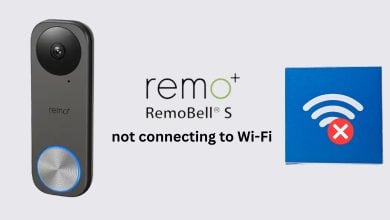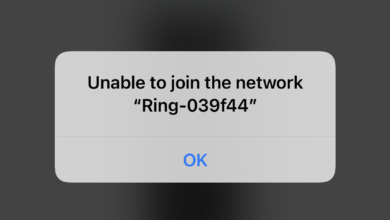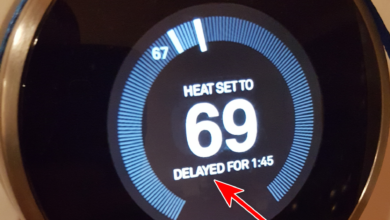Can’t Connect with your Google Home Mini? Try These Fixes
If you’re having trouble connecting with your Google Home Mini, the problem can be caused by issues with your network or internet connection. Make sure your connection requires a password and is secure. Google Home devices do not connect to open networks due to their security protocols.

Also, try updating your Google Home software. This can give it a refresh and fix potential bugs. Additionally, keep in mind that the Google Home Mini doesn’t work well with public networks, such as those in a school, university, or hotel.
1. Disable Virtual Private Networks (VPNs)
You will be unable to detect the Google Home device through your smartphone if you are using a VPN. VPNs do not work well with local connections and devices, as they actively mask their IP. If you are using a VPN, disable it and try connecting to the Google Home device again.
Here is how you can disable the VPN in iPhone settings. You can follow similar steps for Android. If you are using an application like Hotspot Shield, you should disable it.
- Go to Settings > General > VPN.

Disable VPN in iPhone Settings - Disable VPN and restart your device.
- Now check if you are able to detect Home.
2. Disable the Mobile Phone’s Data
You will not be able to connect with your Google Home if your mobile data is enabled on your phone and you are using it as a primary form of network. Establishing a connection with the Home device requires that you are on the same Wi-Fi connection as the device.
Additionally, at times, certain smartphones may automatically switch to mobile data if the Wi-Fi network speed is slow. In this situation, you should disable your mobile data and see if the issue is resolved.
- Navigate to Settings > Cellular or Mobile Data.
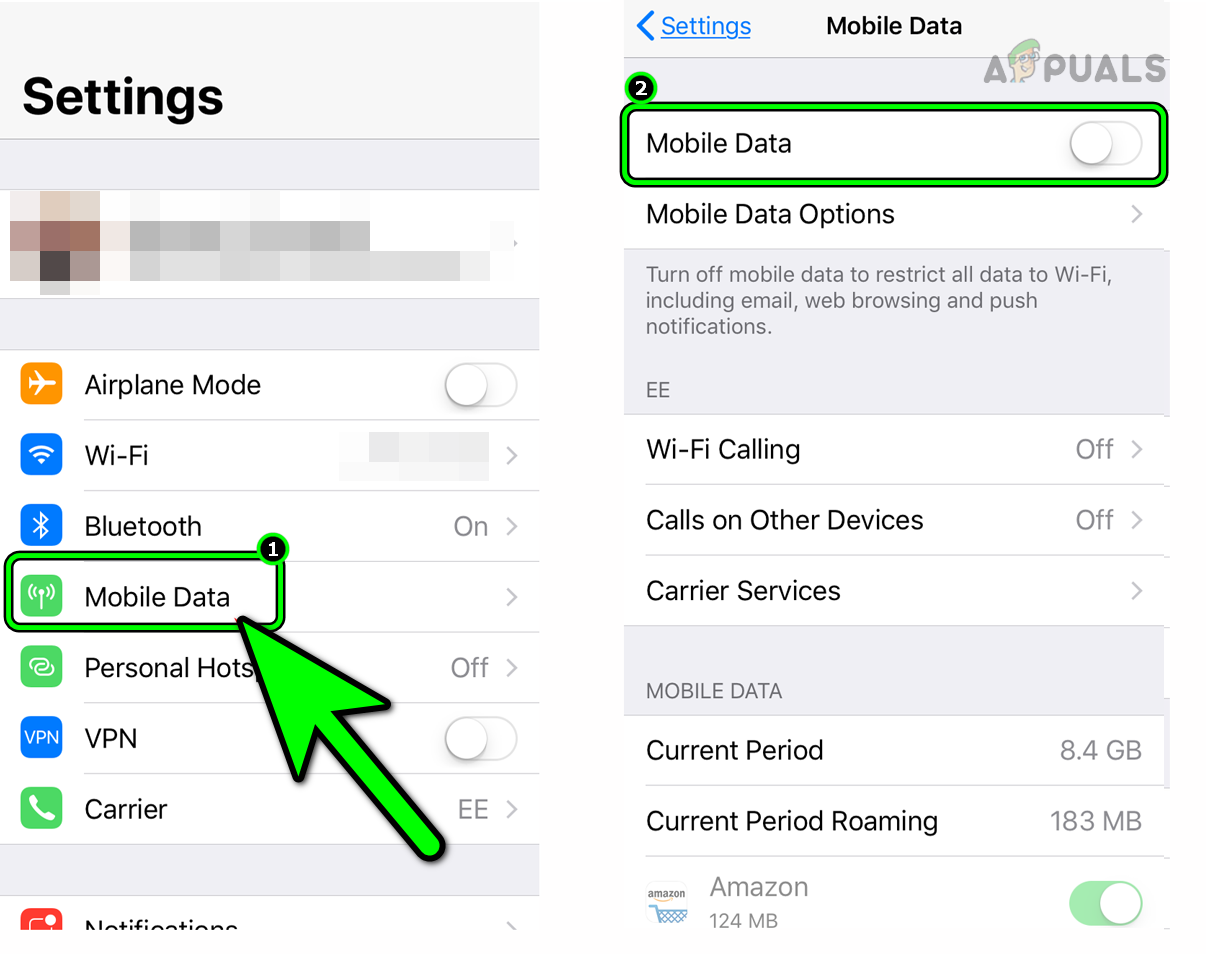
Disable Mobile Data on the iPhone - Disable mobile data and enable Wi-Fi.
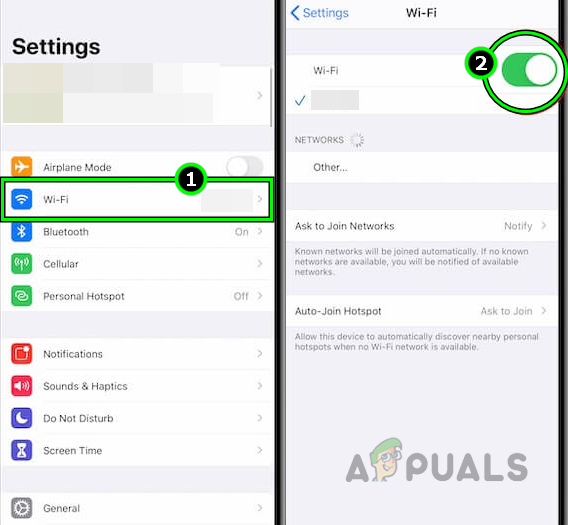
Enable Wi-Fi in the iPhone Settings - Connect the phone to the same Wi-Fi network as the Google Home Mini. Check if the Home app can communicate with the Mini device.
3. Enable Wi-Fi After Putting Your Phone in the Airplane Mode
The Google Home Mini issue will occur if the app fails to utilize the communication modules of the device. In this case, putting the phone into airplane mode and then enabling Wi-Fi can resolve the issue. This enforces the app to connect using only Wi-Fi, as other types of communication, such as mobile data or Bluetooth, are not available.
- Launch the Google Home app and start the process of adding the Google Home Mini.
- When you reach the step where the Device Utility app asks you to disable Wi-Fi, disable the Wi-Fi.
- Open the phone’s Quick Settings panel and tap on the Airplane icon to enable Airplane Mode on your phone.
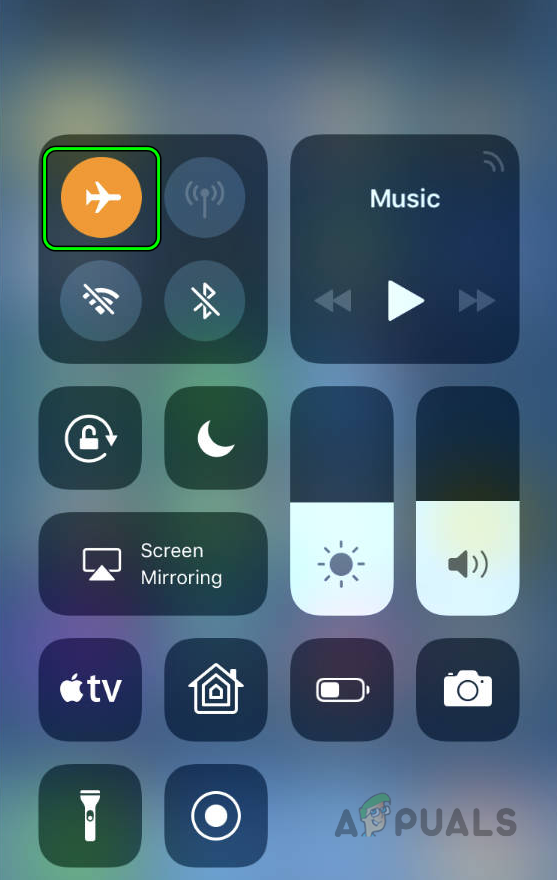
Enable Airplane Mode on the iPhone Through the Quick Settings Panel - Continue with the setup and once the app starts searching for the Mini device, enable Wi-Fi through the Quick Settings panel and then proceed with the setup. Check if the issue is resolved.
- If that fails, repeat the above steps, and when you face the Would You Like to Set Up This Device message, enable Airplane Mode on the phone.
- Enable Wi-Fi and Bluetooth on the phone.
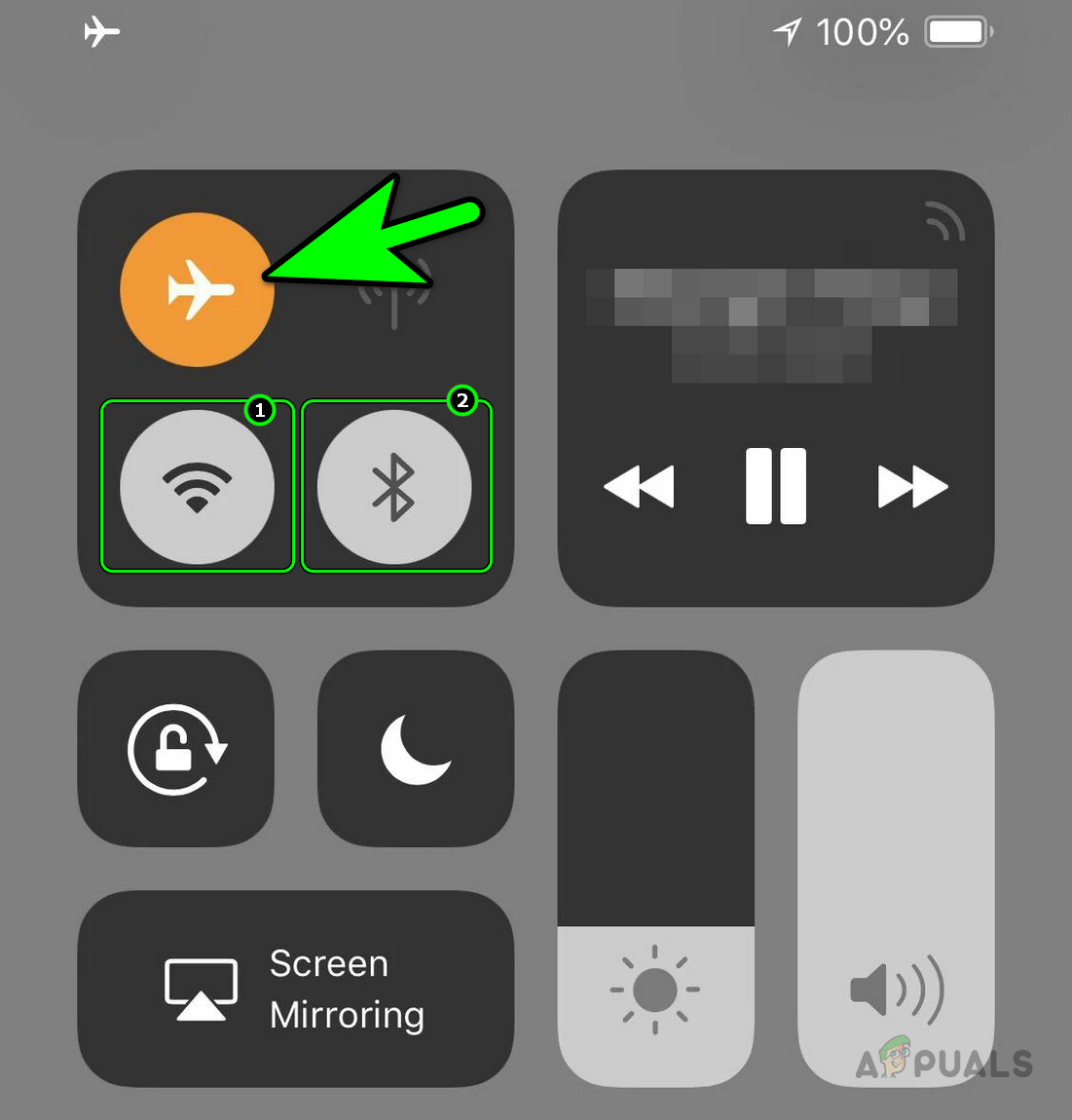
Enable Wi-Fi and Bluetooth on the iPhone While Keeping the Airplane Mode Enabled - Tap on Next in the Utility app and check if the connection was successful.
4. Force Stop the Google Home App
If the essential modules of the Google Home app are in an error state, or the app’s cache is no longer valid, the app will fail to locate the Home Mini on the network. To resolve this issue, relaunch the Google Home app after force-closing it and clearing its cache. To do so on Android:
- Power off your modem and router (if a separate device).
- Wait for a minute and power on both (modem/router).
- Exit the Google Home app > press the Recent Apps button > Close All.

Close All Apps on the Android Phone Through the Recent Apps Menu - Navigate to Settings > Application Manager > Google Home.
- Force stop the app and open Storage & Cache.

Force Stop the Home App and Clear its Cache - Clear the cache and hit the back button.
- Launch the Home app and check if it can communicate with your Home Mini device.
5. Restart the Google Home Mini, Phone, and Router
A communication issue between the Google Home Mini and the router might be caused by a hiccup in the device modules. To fix this, try restarting the Google Home Mini, router, and any other connected devices.
- Restart your phone and check if that clears the Mini device issue.
- If not, power off your Google Home Mini device and unplug its power cable.
- Power off the router and unplug its power cable. If any other device is connected to the network like a TV, etc., power it off and unplug its power cable as well.
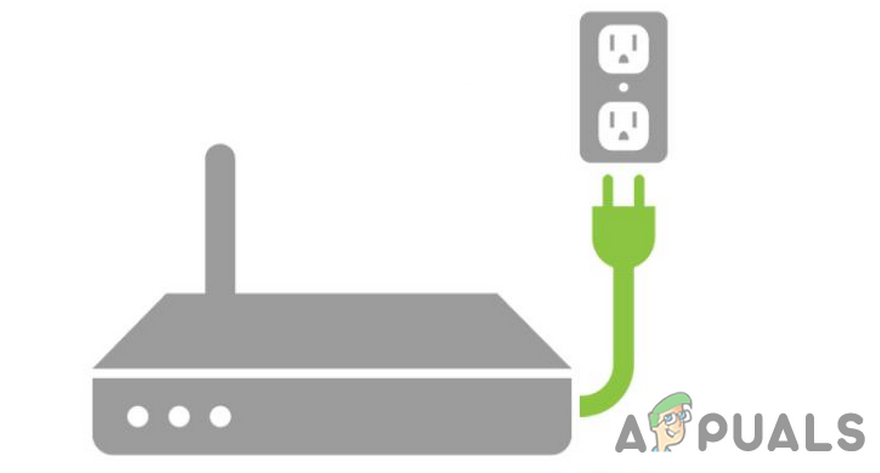
Unplug Your Router from the Power Source - Wait for 5 minutes and connect back the power cables of the Google Home Mini/router while keeping other devices disconnected.
- Power on the router and once it is properly powered on, power on Google Home Mini.
- Check if the Home app on your phone is properly communicating with Google Home Mini. If so, then connect back the other devices to the Wi-Fi, and if any of the devices fail to connect to the network, make sure the limit of the number of devices you can connect to the Wi-Fi is not reached.
6. Remove Saved Wi-Fi from the Google Home App
If you have saved Wi-Fi for the Mini device in the Google Home app, then the app will attempt to connect through that saved Wi-Fi, which is not present due to a network change. As a result, the Home app will not be able to communicate with the Mini device. In this scenario, removing the saved Wi-Fi from the Home app will do the trick.
- Launch the Google Home app and navigate to Settings > Privacy > Remove Saved Wi-Fi and Home Address.
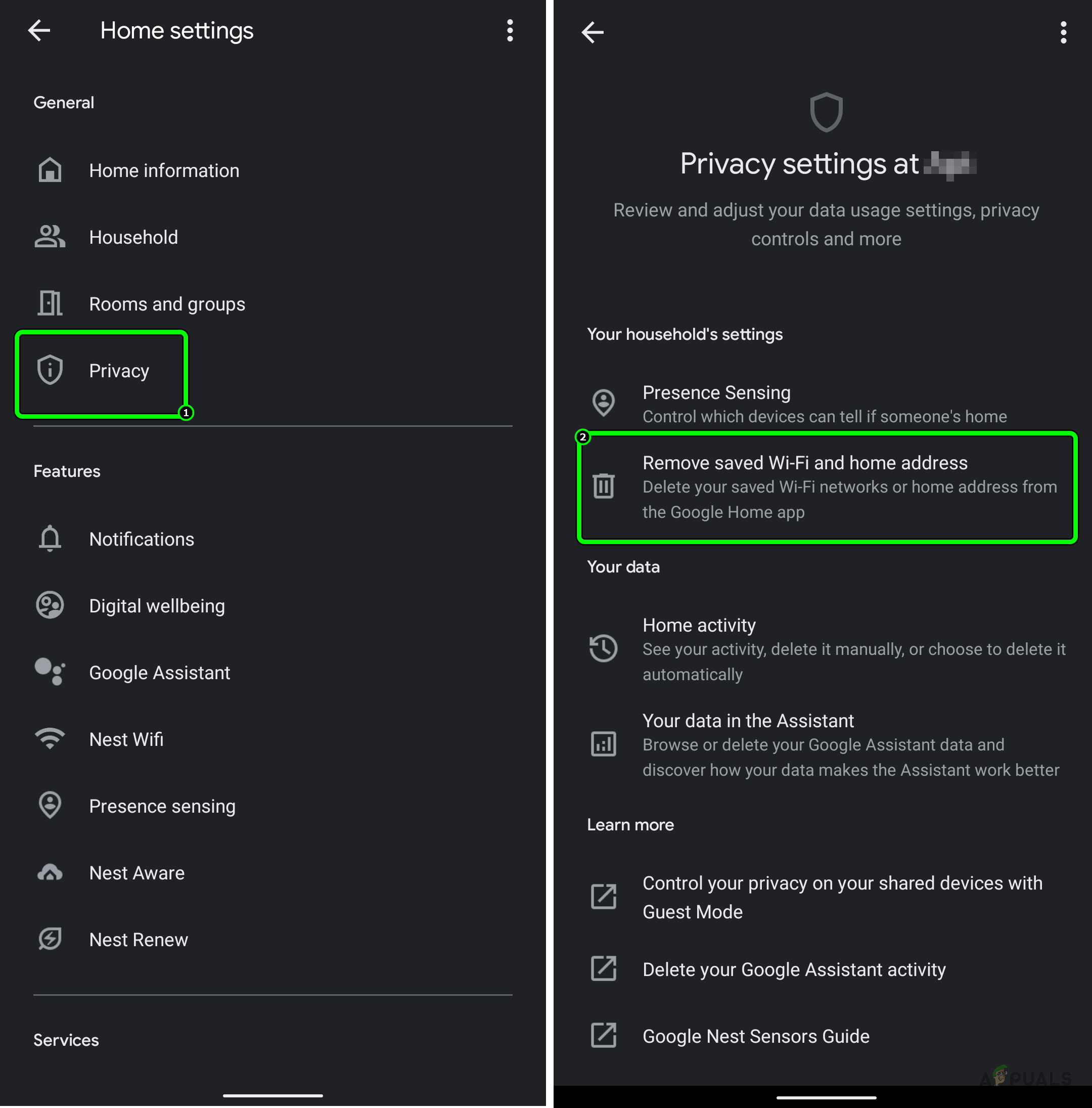
Remove Saved Wi-Fi and Home Address in the Privacy Settings of the Google Home App - Tap on Remove Saved Wi-Fi Networks and then check if the Google Home Mini can be added successfully.
7. Grant the Required Permissions to the Google Home App
If the Google Home app does not have the necessary permissions to operate, it will not be able to communicate with your Google Home Mini. In such a case, grant the Google Home app all the required permissions.
To do so on an Android phone:
- Exit the Google Home app and force close it.
- Navigate to Settings> Applications Manager > Google Home > Permissions.
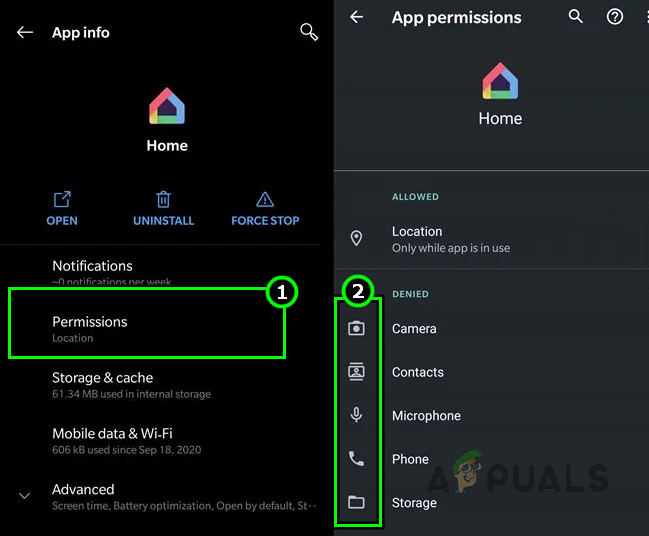
Grant All the Required Permissions to the Google Home App - Make sure that all the required permissions are granted and afterward, launch the Google Home app. See if it is communicating with the Home Mini device.
8. Disable and Enable Location on Your Phone
Location services are crucial for the proper functioning of Google Home Mini and the Home app. If there is an issue with the location modules on your phone, it can disrupt communication between your device and your Google Home Mini.
In such a scenario, a simple fix could be to turn off and then turn back on the location services on your phone. This action should refresh the location modules and potentially resolve any communication problems with your Google Home Mini.
To do so on an Android phone:
- Exit and Force close the Google Home app.
- Swipe up or down to open the phone’s Quick Settings panel.
- Disable Location and restart your modem or router.
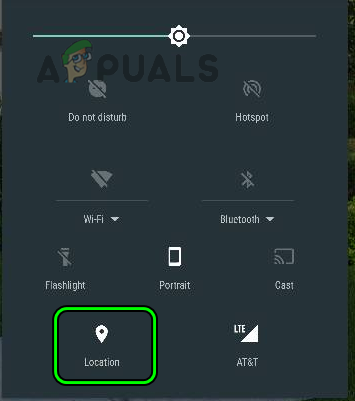
Disable Location in the Android Phone’s Quick Settings - Restart your Google Home Mini and phone.
- Upon restart, enable Location and launch the Google Home app. Verify if your device is able to access the Google Home Mini.
9. Enable Share to Nearby Devices (Android Only)
Share to Nearby Devices’ allows an Android phone to communicate with devices close to it, either through Bluetooth or on the local Wi-Fi. If the mentioned setting is disabled on your phone, it will prevent the phone from locating the Chromecast and become the root cause of the issue. Enabling ‘Share to Nearby Devices’ will solve the problem.
- Navigate to Settings > Connected Devices > Connection Preferences > Nearby Share.
- Enable Use Nearby Share and check if the phone is communicating with the Google Mini.
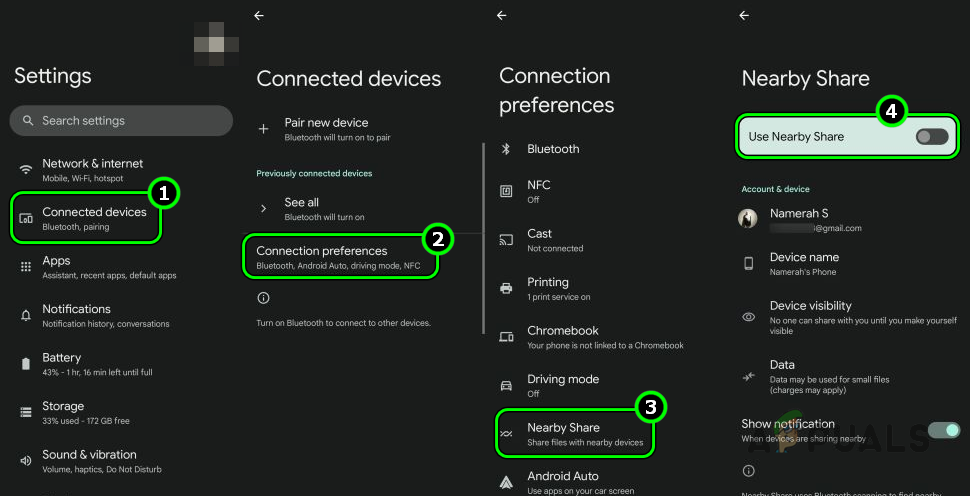
Enable Nearby Share in the Android Phone Settings
10. Disable the Private Wi-Fi Address on the Phone (iPhone Only)
A private Wi-Fi address on an iPhone is used to prevent tracking across various Wi-Fi networks. However, this can cause compatibility issues with the Google Home Mini because a different type of address is used.
To clear this issue, turn off the private Wi-Fi address on your iPhone.
- Navigate to Settings > Wi-Fi > Info icon (i).
- Disable Private Address and tap on Rejoin.
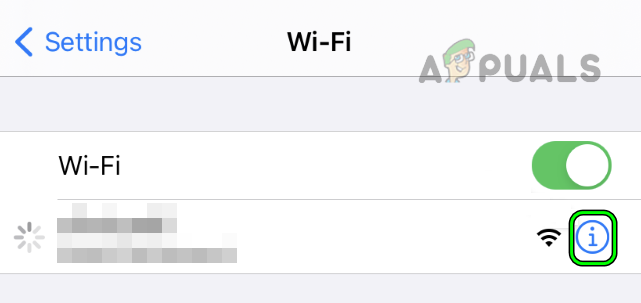
Tap on the Info Icon for Your Wi-Fi Network in the iPhone Settings - Restart the devices (iPhone, Google Home Mini, and router) and check if the required phone can communicate with the Google Home Mini.

Disable the Private Address for the Wi-Fi Network and Rejoin the Network on the iPhone
11. Update the Phone’s OS to the Latest Build
You will experience the Google Home Mini issue if your phone’s operating system is outdated. An outdated phone will not be compatible with the Mini. To solve this, update your phone’s OS to its most recent build.
Before you proceed, ensure that the phone is connected to Wi-Fi and that you have backed up the phone. Also, remember to fully charge the phone’s battery. You can follow similar steps for iOS counterparts.
- Navigate to Settings > About Device > Software Update.
- If an Android OS update is available, download and install the update.
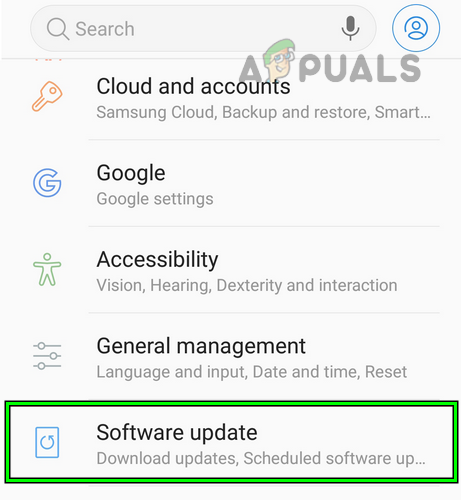
Open Software Update in the Android Phone Settings - Once updated, restart your phone, and check if the Google Mini issue is communicating with our phone.
- If that fails and you are on the Beta profile of the OS, check if removing Beta from your phone clears the problem.
12. Resume the Google Home Mini in the Wi-Fi Schedule
If your Google Home Mini was previously paused according to your Wi-Fi schedule, it might cause communication errors. To resolve this, you will need to resume the connection to your Google Home Mini.
Although you can do this through the Google Home app, it has been reported to have occasional issues with these settings. Hence, let’s go through the process using the Google Wi-Fi app instead, which is more reliable for these adjustments.
- Launch the Google Wi-Fi app.
- Navigate to Settings (in the last tab) > Family Wi-Fi > Devices.
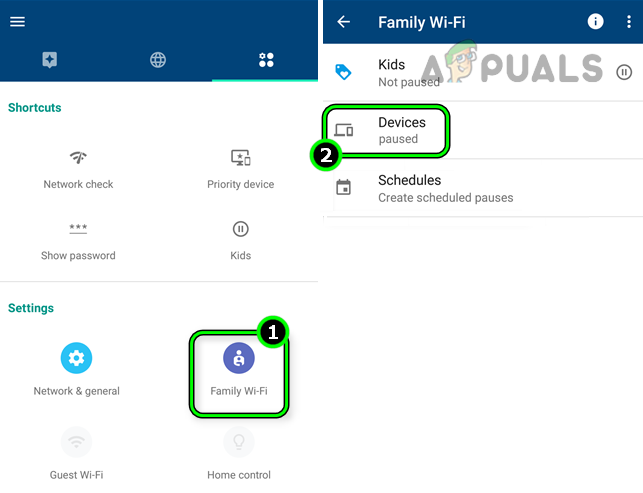
Un-Pause Google Home Mini in Family Wi-Fi Devices - Then, check if the Google Home Mini is shown in the paused devices.
- If so, resume or un-pause it and see if the Google Home app can successfully connect with the Google Mini.
13. Edit the Router’s Settings
The router serves as the backbone for providing smooth communication between your phone and Google Home Mini. If certain router settings are not configured properly, the Mini device will fail to communicate with your phone. Properly configuring the router’s settings will resolve the issue.
We have discussed many settings below, some of which will be applicable to you and some that will not. Before each, exit the Google Home app and force close it. You will need to access the admin portal of your router, either through a browser or an app.
Disable Guest Wi-Fi in the Router’s Settings
To disable Guest Wi-Fi on a dual-band TP-Link router:
- Navigate to the Guest Network tab and uncheck Guest Network (2.4GHz).
- Uncheck Guest Network (5GHz) and apply the changes made.
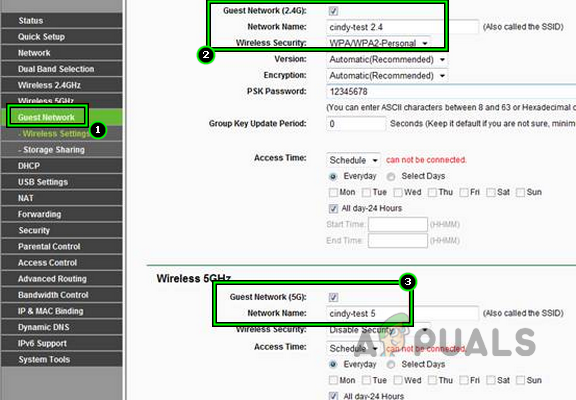
Disable Guest Wi-Fi in the Router Settings - Restart the Google Home Mini, router, and phone.
- Launch the Google Home app and check if it is communicating with the Mini device.
Disable IPv6 in the Router’s Settings
To do this on a TP-Link router:
- Navigate to Settings > IP Support > IPv6 Setup.
- Uncheck Enable IPv6 and save the changes.

Disable IPv6 in the Router’s Settings - Restart your phone, Google Home Mini, and the router. Determine if the Mini device can successfully communicate with the Home app.
Enable UPNP in the Router’s Settings
- Navigate to Settings > Advanced > NAT Forwarding> UPnP.
- Enable UPnP and apply the changes made.
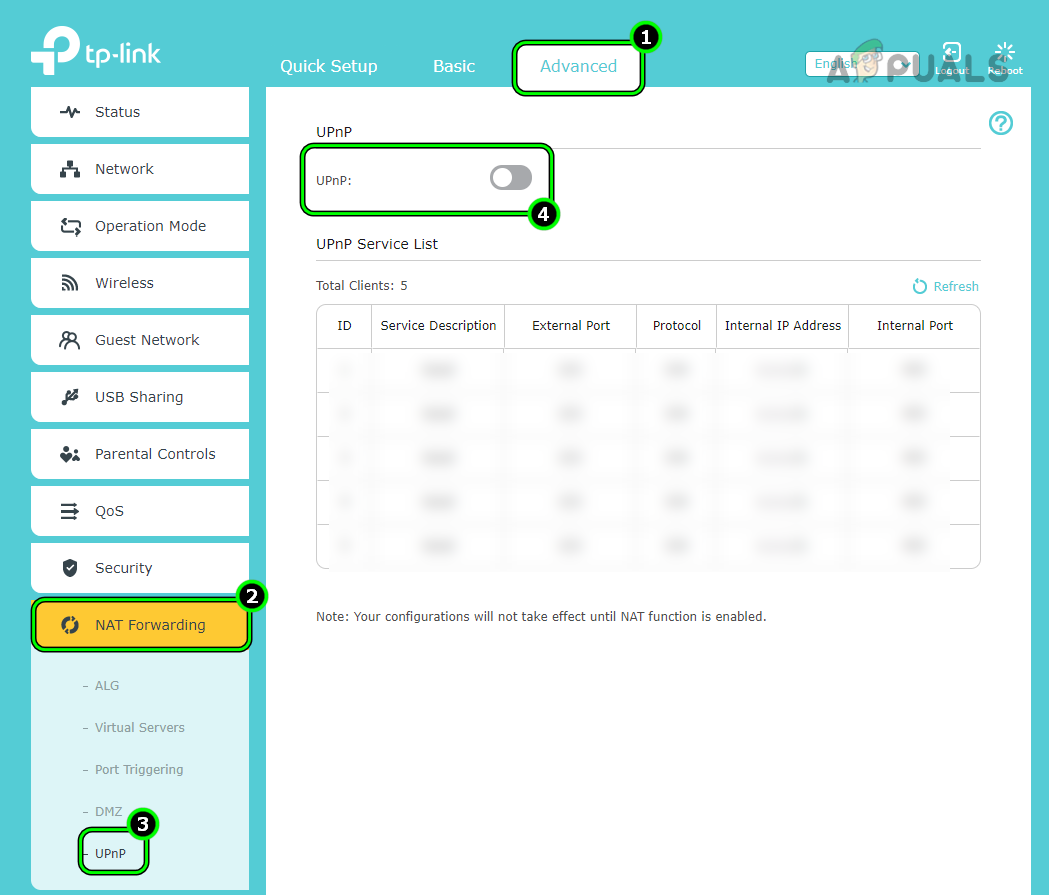
Enable UPnP in the Router’s Settings - Restart the devices and check if the Google Home Mini is accessible on the local network.
Disable the Router’s AP Isolation Feature
- Navigate to Advanced > Wireless > Advanced Settings.
- Disable AP Isolation. In the case of a dual-band router, select the Wi-Fi band first i.e., 2.4GHz or 5GHz.
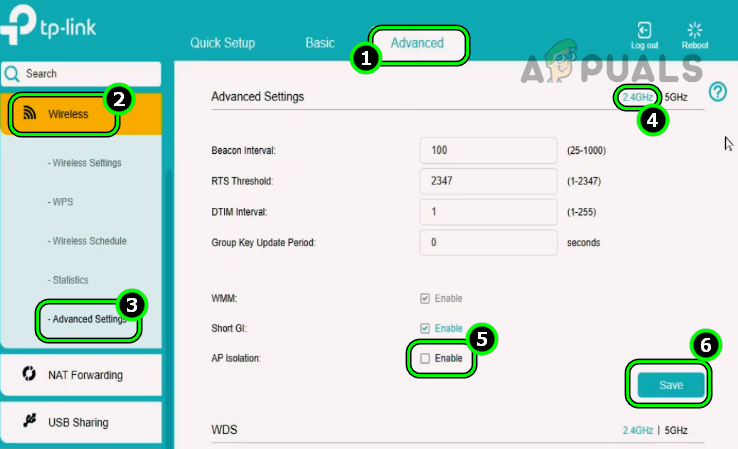
Disable AP Isolation on a TP-Link Router - Save the changes and restart the devices (router, phone, and Google Home Mini). In the case of a dual-band router, make sure to disable AP Isolation for both bands.
- Launch the Google Home app and verify if it can connect with the Home Mini device.
Disable Protected Management Frame for the Router
To disable PMF on an Asus router:
- Navigate to Settings > Wireless Settings.
- Disable Protected Management Frame and save the changes made.
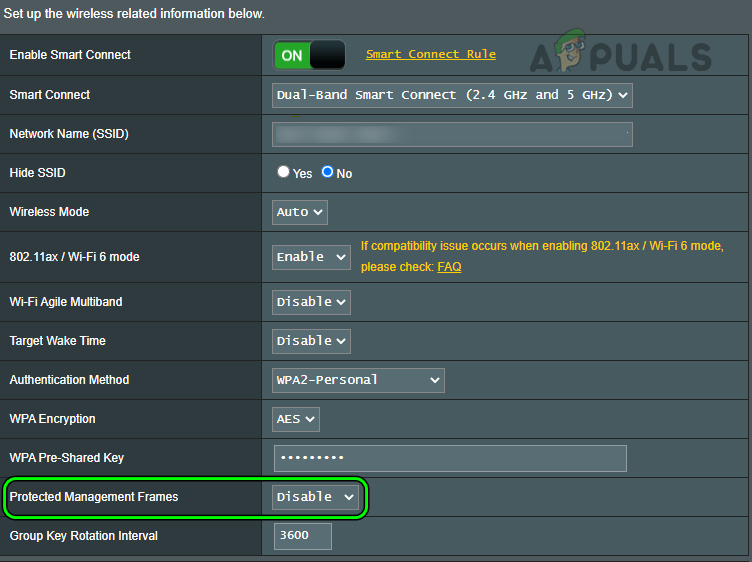
Disable Protected Management Frames on an Asus Router - Restart the devices and verify if the Home app is communicating with the Mini device.
Disable the Router’s Beamforming Feature
To disable beamforming on a Netgear router:
- Navigate to Settings > Advanced > Advanced Setup > Wireless Settings.
- Disable Explicit Beamforming and Implicit Beamforming.
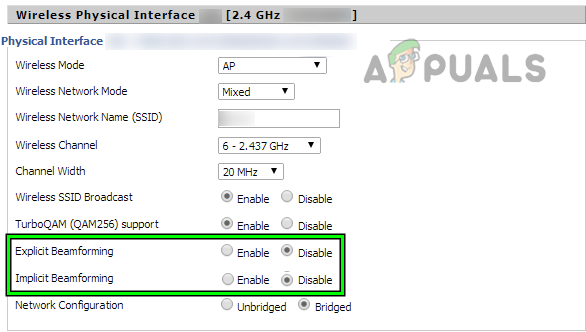
Disable Beamforming on an Asus Router - Save the changes and restart the devices (router, Google Home Mini, and phone). Verify if the Google Home Mini can successfully connect to the Home app.
Disable the Router’s Smart Connect Feature
To disable Smart Connect on a TP-Link router:
- Navigate to Advanced > Wireless > Wireless Settings.
- Disable Smart Connect and apply the change.

Disable Smart Connect on a TP-Link Router - Restart the devices (Google Home Mini and phone) and check if your phone is communicating with the Home Mini device.
Disable the Internet Group Management Protocol on the Router
To do so on a Verizon router:
- Navigate to Advanced > Routing.
- Disable Internet Group Management Protocol (IGMP) and apply the changes made.
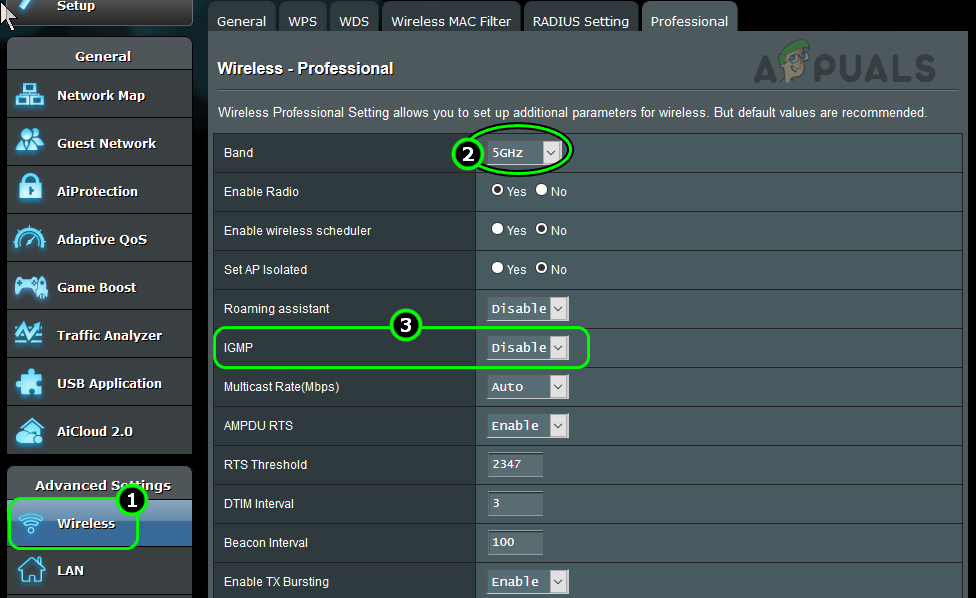
Disable IGMP in the Router Settings - Restart the router, Home Mini, and your phone.
- Upon restart, launch the Google Home app and check if it is successfully communicating with the Home Mini device.
- If that fails, enable IGMP Snooping & Multicast DNS and restart the devices. Check if the issue is resolved.
Disable Fast Roaming in the Router’s Settings
To disable the same on a TP-Link router:
- Navigate to Wi-Fi Settings > Advanced Settings.
- Uncheck 802.11. This protocol is used to handle the Fast Roaming of APs.

Disable Fast Roaming on a TP-Link Router - Save the changes made and restart the router along with the phone, Google Home Mini, etc.
- Determine if the Google Home Mini can successfully be added to the Home app.
Disable the Router’s Wi-Fi 6 Protocol
To disable the Wi-Fi 6 protocol on a Mist router:
- Navigate to Settings > Network > WLANs.
- Select your Wi-Fi network and in the Wi-Fi Protocols section, Disable Wi-Fi 6.

Disable Wi-Fi 6 Protocol - Save the changes made and restart the devices (router, Google Home Mini, and phone).
- Launch the Google Home app and check if it is communicating properly with the Google Home Mini.
A point to remember is that you need to put some routers in legacy mode to disable Wi-Fi 6 on them.
Enable Zero Configuration in the Router’s Settings
To enable Zero Configuration on an Xfinity router:
- Navigate to Advanced > Device Discovery.
- Enable Zero Config and save the changes.
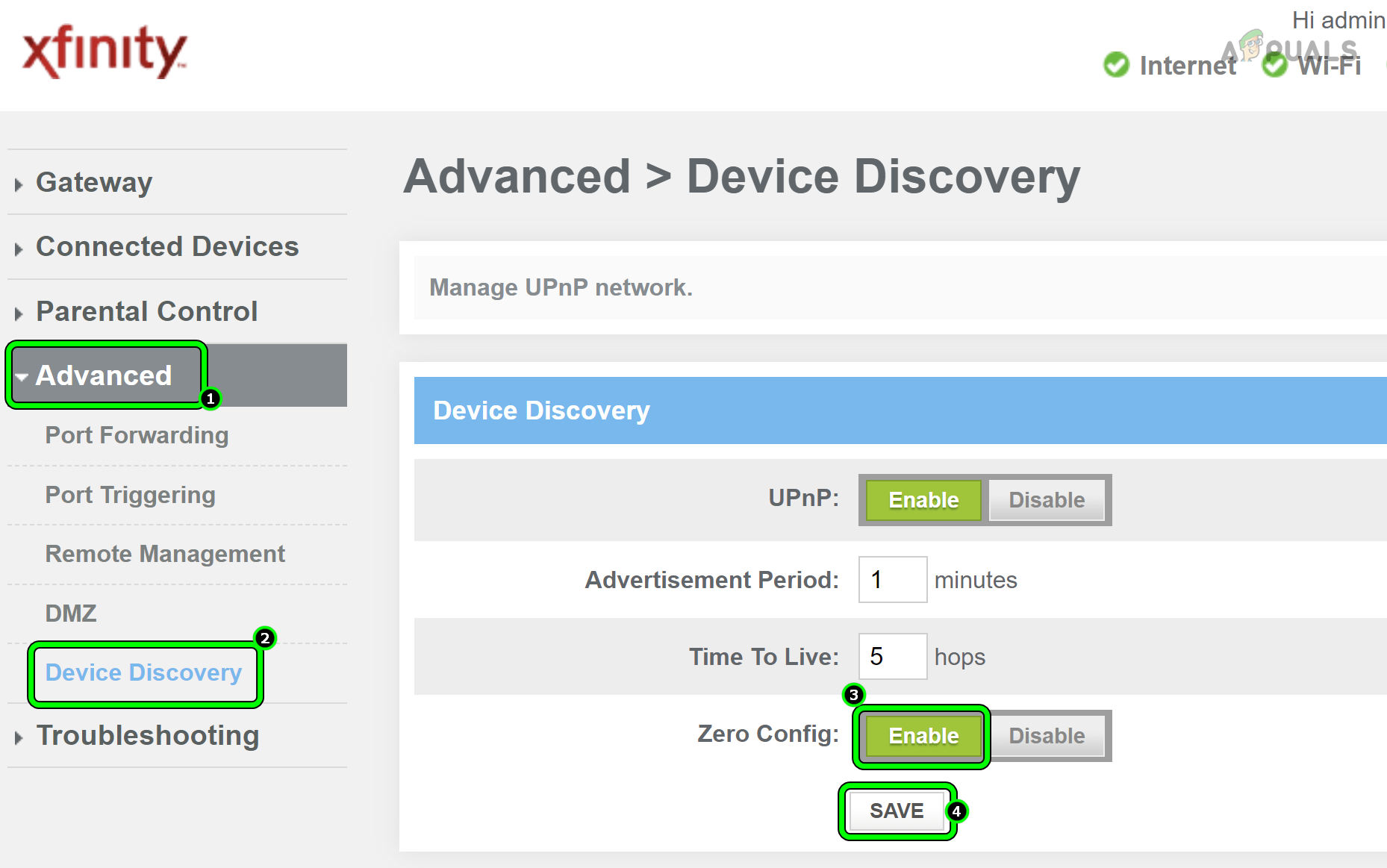
Enable Zero Config for an Xfinity Router - Restart the devices (phone, Google Home Mini, and router) and check if your phone is connecting to the Google Home Mini.
Disable the WPA3 Authentication Method
To disable WPA3 on an Asus router:
- Navigate to Settings > Advanced Settings > Wireless.
- Set the dropdown of the Authentication Method to WPA/WPA2 Personal (or any other authentication method except WPA3 or enterprise) and click on Save.
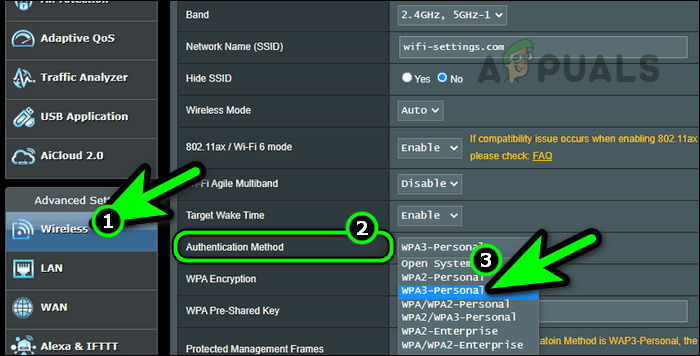
Select the Authentication Method Other Than WPA3 or Enterprise on an Asus Router - Restart your devices (phone, Google Home Mini, and router), and check if your device can access the Google Home Mini.
- If that fails, check if disabling Advanced Protection or 802.11 Protection in the router’s settings solves the problem.
Update the Router’s Firmware to the Latest Version
- Navigate to Settings > Advanced > Firmware Update.
- Click on Check and if a firmware update is shown, install it.

Check for Firmware Update of the Netgear Router - Restart the router, phone, Google Home Mini, and any other connected devices.
- Upon restart, check if the Google Home Mini is working properly.
- If not, check if bringing the router close to the Google Home Mini and phone resolves the issue.
Enable 2.4 GHz and Disable 5GHz Band on the Router
The process to do so on a Virgin Media router:
- Navigate to Settings > Advanced Settings > Wireless Signal.
- Enable 2.4GHZ and Disable 5GHz.
- Save the changes made and connect the devices (Google Home Mini, phone, and other devices) to the 2.4GHz band.
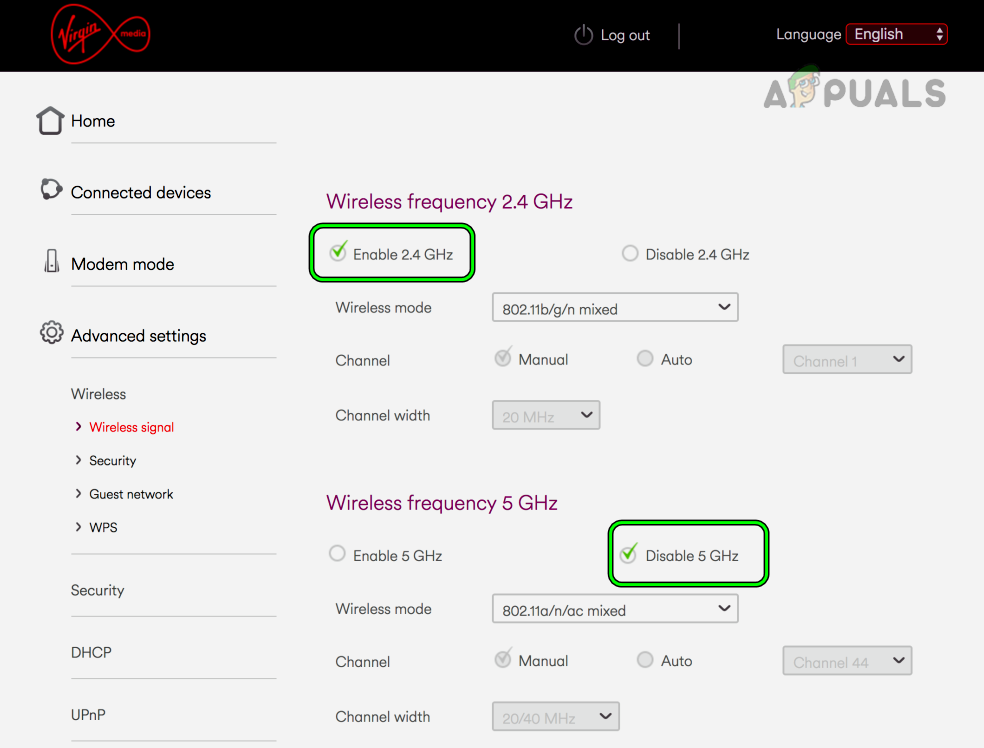
Enable 2.4GHz Band on the Router and Disable 5GHz Band - Launch the Google Home app and determine if the Google Home Mini app is accessible.
- If not, check if setting the Wi-Fi channel to channel 7 solves the problem. You can also use a Wi-Fi analyzer app to find the best channel for your Wi-Fi network.
If the issue was resolved with the 2.4GHz band but other devices require 5GHz, then you may enable 5GHz but after splitting the SSIDs of both bands.
Reset the Router to the Factory Defaults
- Locate the reset button on your router. It can be a pinhole button on the back or bottom of your router.
- Press the reset button for 30 seconds or until your router restarts. For some routers, you may need an object like a paperclip to press the reset button.

Press the Reset Button on the Router - Wait till the router is properly powered on and once done, connect the phone and Home Mini to the Wi-Fi network. In the case of a dual-band router, you may disable 5GHz and connect the devices to 2.4GHz only.
- Launch the Google Home app and check if can properly connect with your Google Home Mini.
If that does not work, check if the issue is resolved when another router (from a friend or family) is used. If so, then you may need a new router that is compatible with Google Home Mini.
14. Try Another Network or Your Phone’s Hotspot
The Google Home Mini may fail to communicate with your phone due to inherent incompatibility issues with certain networks (for example, university or corporate Wi-Fi) or routers. In such a scenario, switching to a different network or using your phone’s hotspot can resolve the problem.
Keep in mind, if you decide to use a hotspot, you will need another phone.
- Exit and Force Close the Google Home app.
- Disconnect your phone and the Mini device from the current network.
- Connect the phone and Mini device to another network (like your phone’s hotspot).
If you opt to use the phone’s hotspot, make sure to name the phone’s hotspot as your Wi-Fi connection and set its password the same as your Wi-Fi connection if you want to avoid connecting to the hotspot manually. You have to turn off your original Wi-Fi in this case.
Select the Authentication Method Other Than WPA3 on an Asus Router - Launch the Google Home app and check if it can communicate with the Home Mini.
15. Update the Firmware of the Google Home Mini to the Latest Build
You will experience the Google Home connectivity issue at hand if the firmware of your Google Home Mini is outdated. This will make the Mini device incompatible with the updated networking protocols used by the router.
In this case, updating the firmware of the Google Home mini will solve the problem. A point to remember is that you must connect the Google Home Mini and your phone to a network (such as your phone’s hotspot) to update its firmware.
- Launch the Google Home app and select your Google Home Mini in the devices list.
- Scroll to the bottom and make sure Mini’s firmware is updated to the latest build. There is no button to tap but opening this menu triggers the firmware updates.

Update the Firmware of the Google Home Mini to the Latest Build - Wait till the updates are installed on the Home Mini device. Keep an eye on the light on your Home device.
- Once updated, restart the Mini device and phone after disconnecting from the current network (like a hotspot from another phone).
- Connect back the Google Home Mini and your phone to your regular Wi-Fi network.
- Launch the Google Home app and check if it is communicating with the Home Mini.
16. Reinstall the Google Home App
The Home app will not be able to communicate with the Mini device if the latest app update has invalidated its core modules. To resolve this issue, reinstall the Google Home app. To do this on an Android phone:
- Steer to Settings > Application Manager > Google Home.
- Force Stop the app and open Storage.
- Clear the Cache and Data.
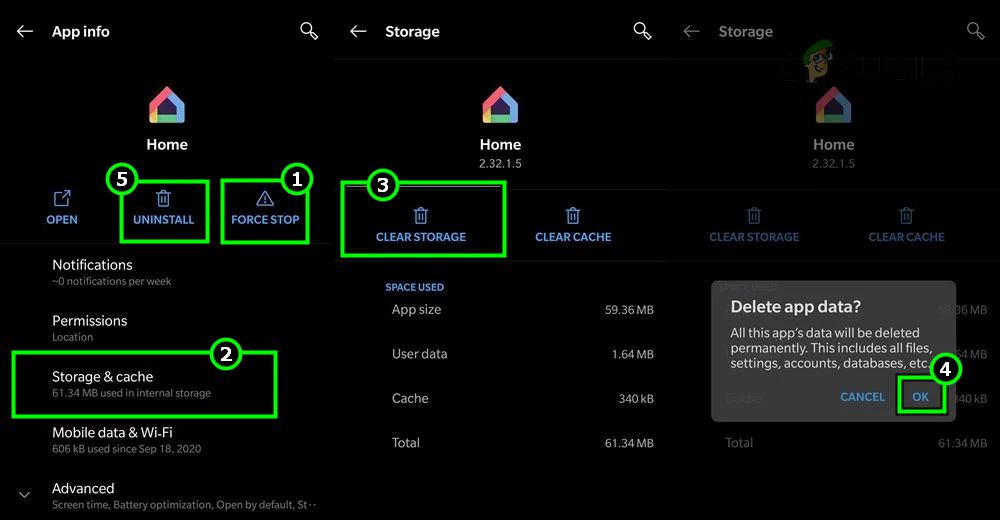
Uninstall the Google Home App on the Android Phone - Hit the back button and Uninstall the app.
- Restart your phone and install the Google Home app.
- Launch the Google Home app and grant the permissions required by the app.
- Log into the app using your desired Google account and check if the app can connect to the Google Home Mini.
17. Reset the Google Home Mini to the Factory Defaults
If none of the above methods work, you can move forward and try to reset the Home device to factory defaults. This will reinitialize all configurations and fix problems that we have not been able to debug through the steps listed above.
- Remove the Google Home Mini from the Home app (if added previously) and force close the Home app.
- Locate the reset button of the Google Home Mini. Usually, a round button is on the bottom side of the Mini device.
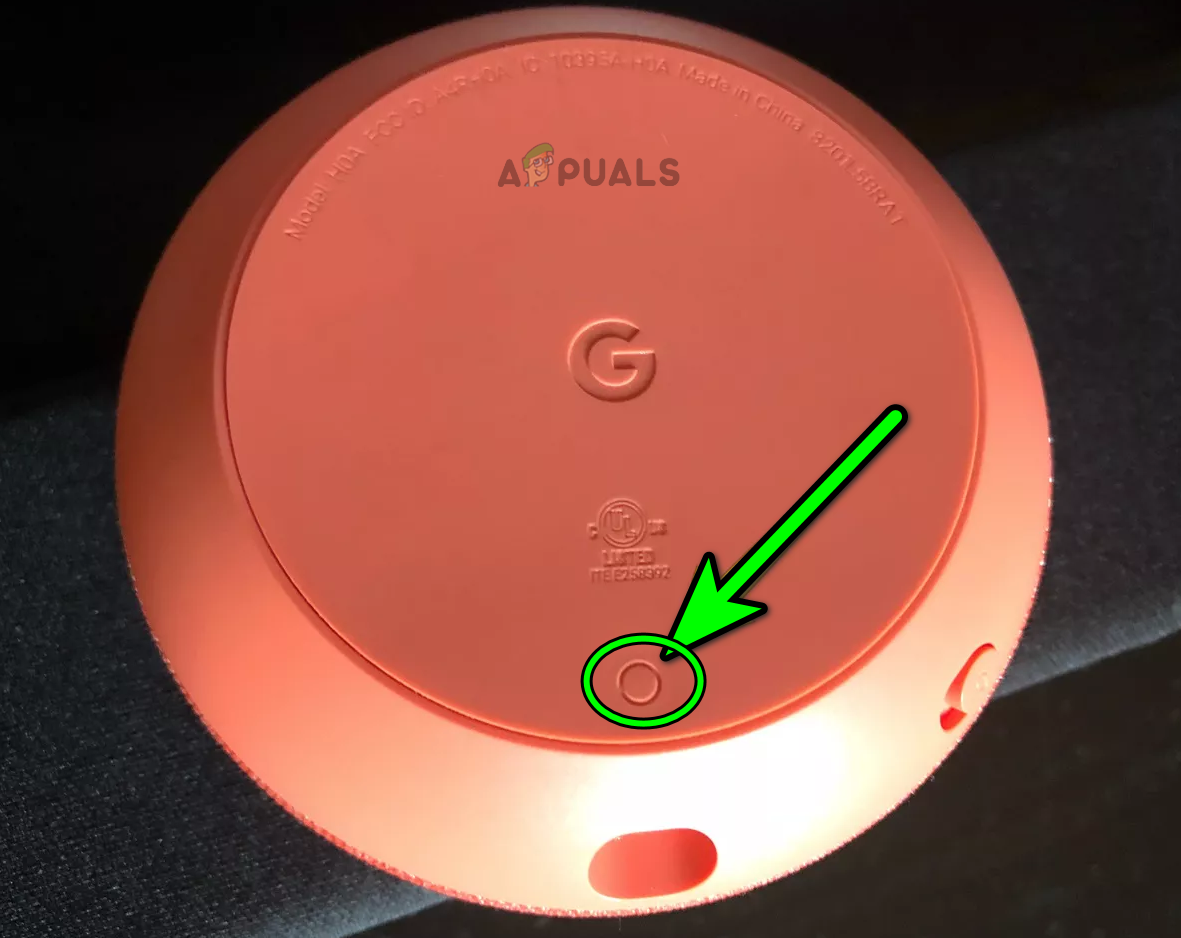
Reset the Google Home Mini to the Factory Defaults - Press the reset button for 15 seconds and the Mini device will prompt that you are going to reset it.
- Release the button and afterward, launch the Google Home app.
- Start the process of adding the Mini device and hopefully, it will be added successfully
If none of the above worked, you contact Google support, and if under warranty, ask for a return or replacement of the Google Home Mini.
 Reviewed by
Reviewed by 